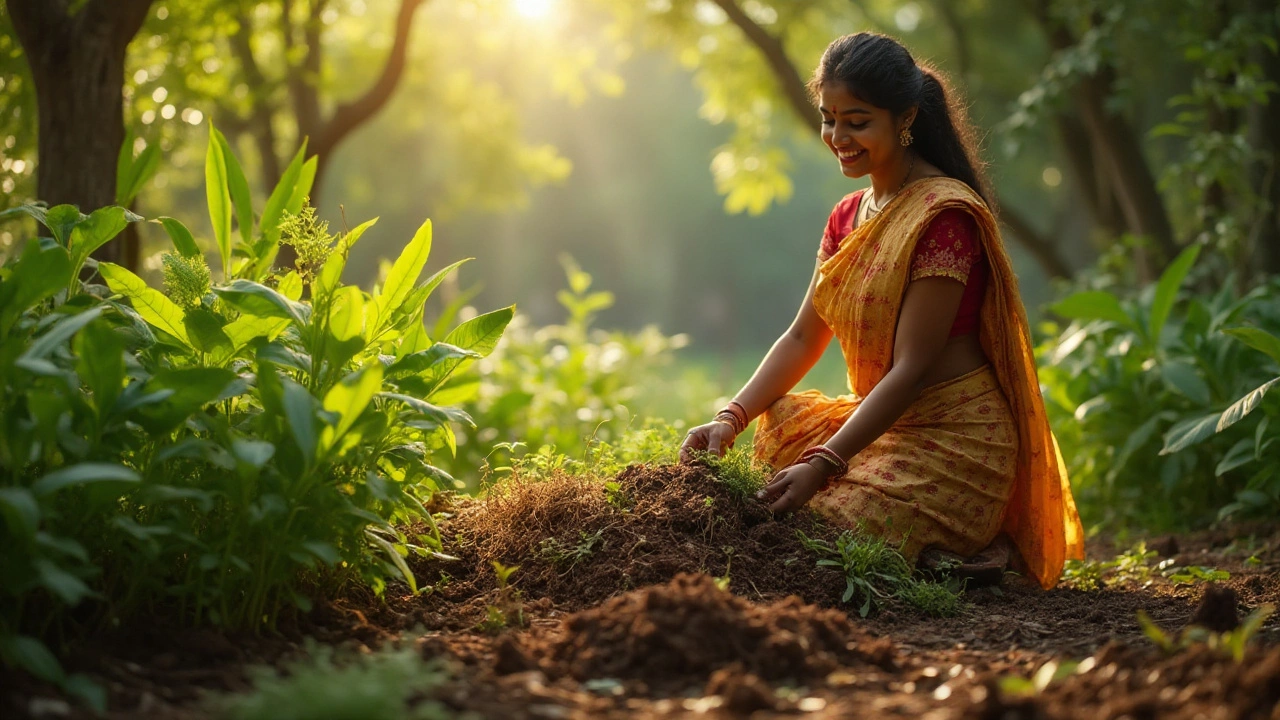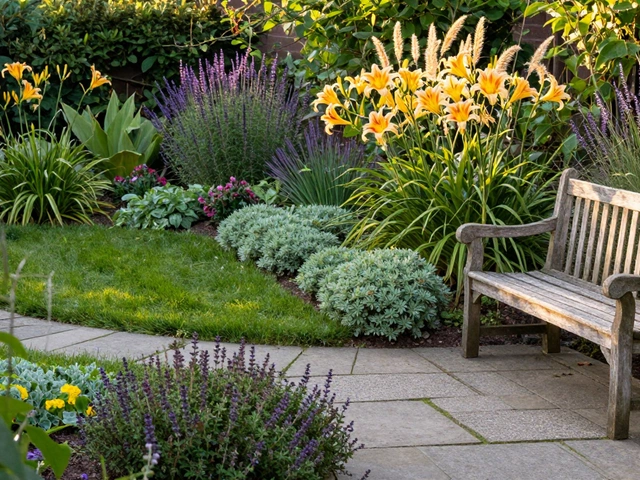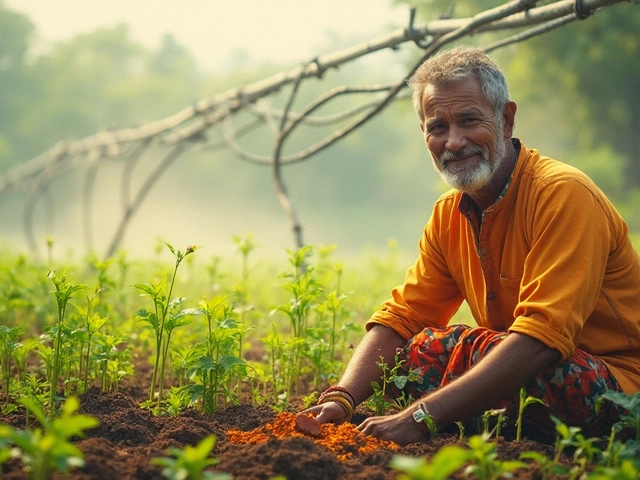Imagine turning your daily kitchen scraps and yard waste into a rich, earthy treasure that breathes life into your garden. That's the magic of organic composting—a simple yet powerful way to recycle and revitalize the natural world around us.
Composting isn't just for those with a green thumb or a sprawling garden; it's an accessible practice for everyone looking to tread lightly on the planet. By understanding the basics, choosing the right materials, and nurturing the process, you can create compost that not only feeds your plants but also fosters a sustainable lifestyle.
In this guide, we'll explore the ins and outs of organic compost, share easy-to-follow techniques, and reveal little-known tips to boost your composting game. Whether you're a seasoned gardener or a curious beginner, your composting journey starts here.
- What is Organic Composting?
- Essential Materials for Compost
- Creating the Perfect Compost Pile
- Common Composting Mistakes to Avoid
- Benefits of Using Organic Compost
What is Organic Composting?
At its core, organic composting is Mother Nature’s recycling system. It transforms everyday organic waste into a natural fertilizer that enriches soil and fosters plant growth. Imagine having a magical bin that takes in the peelings of yesterday's apple, coffee grounds, eggshells, and even grass clippings, and turns them into a dark, crumbly substance no garden should be without. This is what composting is—a celebration of both simplicity and sustainable science.
The process hinges on the breakdown of organic matter by microorganisms such as bacteria, fungi, and insects, which all contribute their part in creating this nourishing mixture. Compost is frequently referred to as ‘black gold’—its value lies in the abundant nutrients it provides to the soil. Humus, the chief component of compost, holds onto moisture, improves soil structure, and delivers essential minerals. The natural decomposition process takes several weeks to months, depending on factors like temperature, moisture, and aeration, but the outcome is worth the wait.
To see the scope of its impact, consider this: composting can divert around 20-30% of household waste from landfills, as per the Environmental Protection Agency. That’s a significant reduction, considering that organic waste in landfills creates methane, a greenhouse gas far more potent than carbon dioxide. By embracing organic composting, you contribute to a greener planet and, surprisingly, healthier living spaces.
"Compost is proof that there is life after waste"—that’s a mantra among many environmentalists and gardeners alike. It reminds us that composting is an act of giving back to the Earth, bringing forth lush gardens and vibrant ecosystems from what was once discarded.
In essence, composting bridges the gap between waste and productivity, where everyone from amateur gardeners to city planners can take part in. It replenishes the soil, mitigates waste, and initiates a cycle of renewal. So, the next time you peel a carrot or toss leaves on the ground, consider that these remnants have the potential to nurture your plants and, effectively, your world. This is the secret of organic composting, a practice that transcends simplicity to touch upon a broader, impactful layer of our ecosystem.
Essential Materials for Compost
Creating successful organic compost requires a careful balance of ingredients to ensure the pile decomposes properly while enriching the soil. The two main categories of composting materials are greens and browns. Each plays a unique role in the process, providing the necessary nitrogen and carbon, respectively. Begin by collecting greens, which come in the form of fresh plant material. These may include food scraps like fruit and vegetable peels, coffee grounds, and grass clippings. During summer, the abundance of garden waste can accelerate your compost pile’s growth immensely.
Browns, on the other hand, are dry materials that make up the other half of the compost equation. These include fallen leaves, straw, shredded newspaper, and small twigs. Browns are crucial because they provide carbon, which feeds the microorganisms that break down the compost pile into dark, crumbly soil. Be sure to shred or break these materials into smaller pieces to speed up decomposition. A simple rule of thumb to remember is to maintain a balance of around two to three parts browns to one part greens.
Water is another vital component, acting as the life-giving drink that keeps the organic party happening. Keep your compost pile damp, similar to a wrung-out sponge, to ensure microorganisms thrive. Too much moisture can lead to a soggy, smelly mess; too little will slow down decomposition significantly. Turn the materials regularly to aerate the pile and enhance the process effectively. Aeration is key as it helps oxygen permeate, feeding the aerobic bacteria that do the hard work of breaking everything down.
Optional but advantageous additions include crushed eggshells, which add calcium, and a sprinkle of garden soil to introduce a host of helpful microbes right from the start. It's important to remember that some items should be kept out of your compost pile, such as meat, dairy products, and diseased plants. These can attract pests or introduce harmful pathogens. If available, you might also consider adding bioactivators. These products, often in powder or liquid form, are designed to boost biological activity within a compost pile. However, they aren't necessary for everyone, especially if you maintain the right mix and regularly tend to your compost.
Composting experts often assert the importance of patience and experimentation in finding the perfect materials for your unique environment. As Francesco Di Gregorio, a renowned horticulturist, once said,
“Compost is as much art as it is science, requiring observation and adaptability.”By gradually adjusting your methods over time, you will not only enjoy the process but also produce eco-friendly waste that significantly improves your garden's vitality.
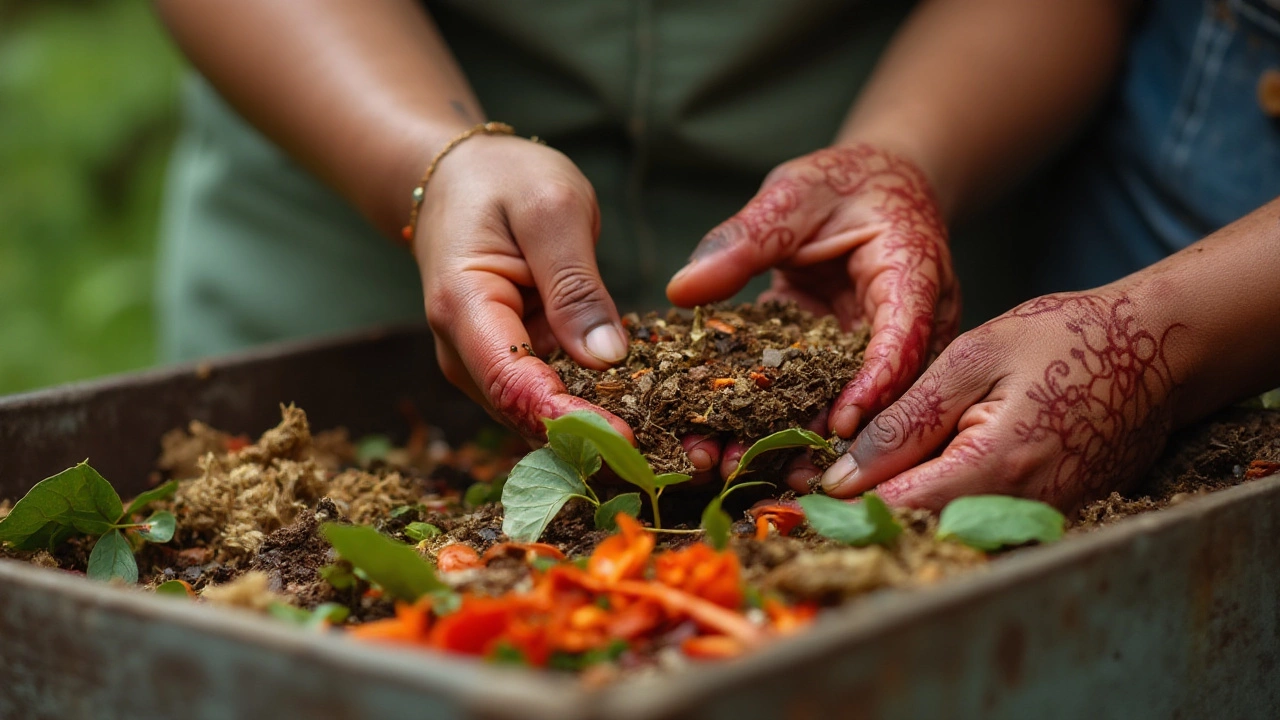
Creating the Perfect Compost Pile
Building an effective compost pile is both an art and a science, blending the natural breakdown of materials with a dash of human ingenuity. A well-crafted compost pile starts with selecting an ideal location, ideally in a spot that gets a mix of sun and shade while keeping it easy to access for dumping organic materials. You’ll want to begin with the proper blend of green and brown materials; think of green as your nitrogen-rich sources, like vegetable scraps and grass clippings, and brown as your carbon-rich materials, such as fallen leaves and small twigs.
Layering these materials is like following a cherished family recipe, aiming for the right balance between moisture and air. Start with a layer of coarse brown materials to allow air to circulate, and then add a layer of green materials to provide essential nutrients. It's beneficial to add a thin layer of garden soil between the layers, as it introduces microorganisms that act as the worker bees of your compost pile, accelerating the breakdown process.
The real magic of composting comes from regular maintenance and dedication. Turning your compost pile every few weeks is essential to introduce oxygen, which fuels the microorganisms breaking down the materials. Consistency is key here, and while it might seem daunting, turning the pile can become a satisfying rhythm in your gardening routine. Maintaining the moisture level is equally important; imagine it as wringing out a damp sponge, not too dry and not too wet. Water your pile during dry spells, and cover it during heavy rains to keep the balance.
Organic compost gives back tenfold, but patience is crucial. Depending on the conditions and materials used, a compost pile can take anywhere from a few months to a year to mature. While waiting, monitoring the temperature with a compost thermometer, often found at gardening centers, ensures internal heat is active, indicating productive decomposition.
According to expert horticulturist Linda Chalker-Scott, "A compost pile should ideally reach a temperature between 130-160 degrees Fahrenheit to effectively decompose organic matter and kill off any unwanted pathogens."This high temperature is a good sign that your microorganisms are working at full capacity.
Another tip is adding varied ingredients to keep the compost nutritionally balanced. Kitchen scraps like banana peels, coffee grounds, and eggshells make excellent compost partners when paired with plant trimmings and straw. Avoid using dairy, bones, or meats as these attract pests and disrupt the balance you’ve carefully curated. Some gardeners even supplement with specialized compost starters found in stores or online, which can jumpstart the decomposition process by introducing additional microbes or fungi.
Our journey in creating the perfect compost pile concludes with harvesting the "black gold." After the pile has decomposed and resembles a dark, earthy substance, use it to enrich garden soil by lightly mixing it into your beds or as a nutrient-packed top dressing. Compost is living proof of the effectiveness of sustainable practices, transforming what was once waste into a rich, life-giving treasure.
Common Composting Mistakes to Avoid
Embarking on a journey toward organic compost creation is both rewarding and eco-conscious. However, even the most dedicated gardeners can stumble on common pitfalls in the composting process. One of the most prevalent errors is failing to maintain the right balance of greens and browns. Greens represent nitrogen-rich materials like vegetable scraps, grass clippings, and coffee grounds, whereas browns add carbon, coming from things like dead leaves, cardboard, and branches. An imbalance can lead to a compost pile that either smells foul or decomposes too slowly. Striking the right mix is crucial to ensure the pile remains active without attracting unwanted pests or giving off unpleasant odors.
A common oversight is overlooking aeration, which is vital for the decomposition process. Composting relies heavily on aerobic bacteria that need oxygen to thrive. Without adequate turning and mixing of the compost pile, these microorganisms can suffocate, leading to a compost heap that is inefficient in breaking down materials. Regularly turning your compost every one to two weeks injects fresh air, enhancing microbial activity and speeding up the breakdown process.
Another frequent mistake is neglecting moisture levels. Like all living organisms, the bacteria and fungi working in your compost need water—but not too much. A soggy pile can become anaerobic, producing foul smells, while a dry pile will stall. Imagine your compost having the consistency of a wrung-out sponge; that’s the sweet spot. Gardeners in different climates might need to adjust, covering their compost in rainy environments or watering it during dry spells.
“Compost can be compared to baking a cake. You need the right ingredients, properly mixed,” says Dr. Mary Appelhof, often described as the mother of modern composting.
“If the recipe isn't followed, you might end up with a flat cake or compost that's simply not working at its best.”
Avoiding the inclusion of forbidden items is crucial. Harmful substances like meat, dairy, oils, and diseased plants have no place in your compost bin. These materials can invite pests, spread pathogens, or inhibit decomposition. Moreover, synthetic materials such as plastic or chemically treated wood are also a big no-no as they do not break down and may contaminate your compost with toxins. Check your compost additives for safety, ensuring everything is biodegradable and appropriate for a thriving compost pile.
Lastly, many beginner compost enthusiasts underestimate the importance of patience. Composting isn't an overnight miracle. Depending on various factors such as climate and material, the decomposing process can take several months to a year. Consistency and observation are key; by adjusting inputs slightly each time you compost, you learn and refine your technique.
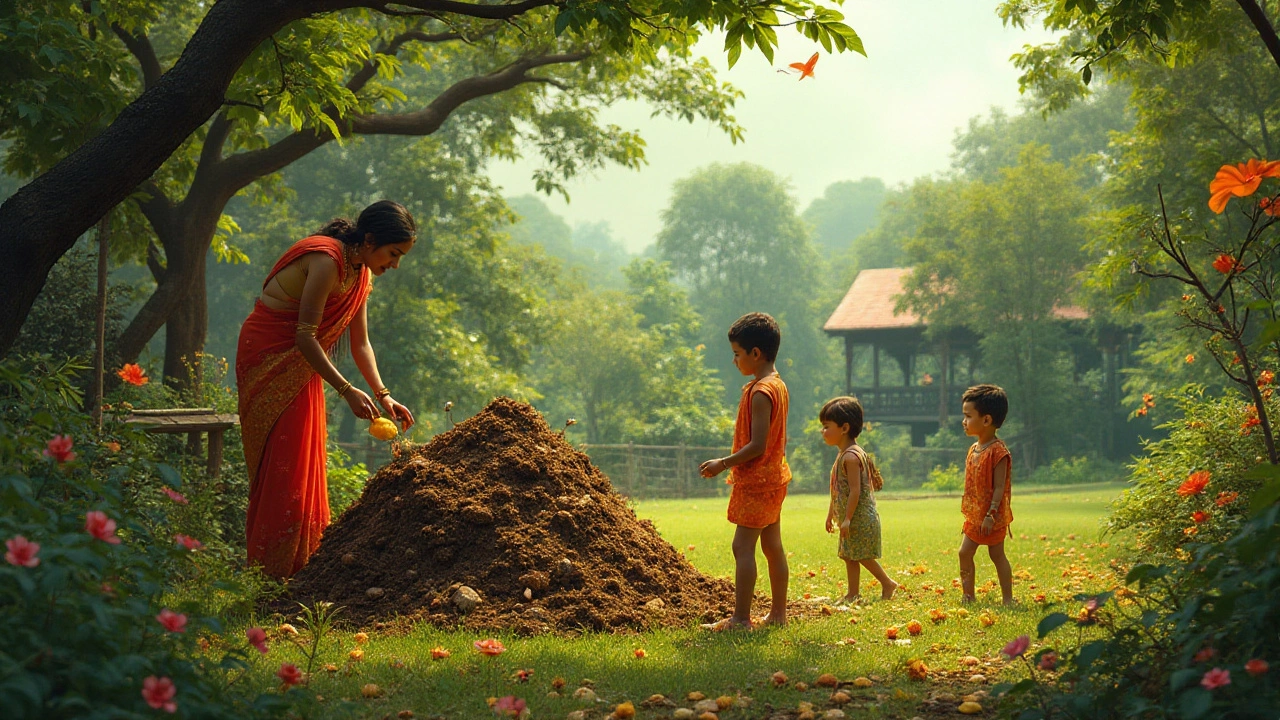
Benefits of Using Organic Compost
In the journey of gardening and sustainable living, using organic compost has numerous benefits that extend beyond just nourishing your plants. One of the most significant advantages is its incredible ability to improve soil structure. Compost acts like a natural soil conditioner, enhancing its texture, increasing its capacity to hold water, and enabling soil to drain efficiently. This balance in soil moisture not only helps plants establish strong roots but also optimizes the availability of nutrients they need to thrive.
An often overlooked benefit of compost is its role in pest control. By enriching the soil with a complex mix of nutrients and microorganisms, organic compost fosters a vigorous soil ecosystem. This ecosystem can help deter pests and diseases naturally. Strong, healthy plants are less vulnerable to infestations, reducing the need for chemical pesticides. In the words of renowned environmentalist David Suzuki, "The right balance of organic material in soil doesn't just feed the plants, it safeguards them."
Another vital advantage is compost's ability to reduce waste and lower your carbon footprint. A surprising amount of household waste can be turned into compost, diverting it from landfills where it would otherwise produce harmful methane gases. By adopting composting practices, you actively contribute to decreasing greenhouse gas emissions and promoting ecological balance. Every pound of food scraps composted has a ripple effect on sustainability.
For the eco-conscious gardener, the appeal of sustainable gardening is strong. Compost holds essential nutrients like nitrogen, phosphorus, and potassium—all crucial for plant health. When added to your garden, these nutrients are slowly released, providing natural fertilization over time. This minimizes the need for synthetic fertilizers, which often wash away into water bodies, causing eutrophication. Thus, composting aligns with the goals of eco-friendly waste reduction and resource conservation.
Last but not least, using compost enhances the biodiversity of your garden. A vibrant microbial life in compost enriches the soil food web, which includes bacteria, fungi, earthworms, and other beneficial organisms. This biological activity helps in breaking down organic matter and cycling nutrients, creating a dynamic growing environment. Embracing sustainable gardening with organic compost fosters a thriving ecosystem where plants can grow resiliently.
All these benefits illustrate why more gardeners and homeowners are turning to composting as a staple practice. With long-lasting results that uplift both the environment and personal gardening success, organic composting serves as a cornerstone in responsible, green living.
